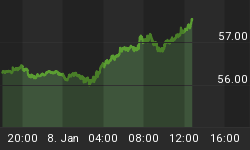The U.S. banking industry is enjoying a banner year, one of its best in decades. The nation’s six banks are set to report a 14-percent increase in earnings for the April-June quarter thanks in large part to president Trump’s $1.5-trillion tax package. Without those generous cuts, the banks’ earnings would fall by 90 percent from $3.5 billion to just $413 million.
The last bonanza of such a magnitude came in 2010 when President Obama made most of President George W. Bush's cuts permanent. Clearly, banks cannot depend on these financial windfalls that comes once in a blue moon.
And neither do they have to.
A fresh study has revealed that the global financial services industry can add more than half a trillion in revenues as early as by 2020 by using intelligent automation.
According to technology services and digital transformation consultancy firm Capgemini, banking and capital markets can realize a $269-billion increase in revenue by the adoption of a combination of technologies including AI, robotic automation processing (RPA) and business process optimization to automate rules-based, high-volume and highly repetitive tasks in their workflows. The insurance industry would realize a $243-billion increase in revenue by adopting similar technologies.
RPA is banking software that allows banks to quickly and accurately manage high volumes of multiple processes across complex infrastructure while delivering a superior customer experience.
Offensive and Defensive Moves
Such a move by banks and other financial institutions would be both offensive and defensive by helping them acquire new customers and grow revenues while also helping them cut costs and minimize churn by improving the customer experience.
The report says that 45 percent of companies that use such systems look to grow revenue; 52 percent want to save costs, while 55 percent want to improve customer satisfaction. Related: The Surprising Media Giant Taking On Netflix
And banks should most definitely strive to shape up—or ship out.
In February, the WSJ reported that banks had shuttered 1,700 branches over the past 12 months—the fastest decline on record—as customers increasingly move to faster alternatives including online banking. The hardest hit are smaller banks that are unable to adopt efficiency-enhancing technologies such as RPA quickly enough.
And that should not come as a surprise to anyone in this day and age. People everywhere today are looking for instant gratification--that’s why once utopian models like same-day and one-hour delivery have become almost the norm.
Consumers are now also demanding the same efficiency and agility from traditionally slow-moving banks and financial institutions—and sometimes jumping ship when their needs are not met. Customers expect to be able to quickly access their money at any time of day and from almost any device. Banks that fail to make the cut are losing out to rivals or mobile pay systems such as Apple Pay or Google Pay.
Take the case of China where a major fintech revolution is firmly underway. Millennials and younger generations are shunning stodgy banks preferring to do things like paying bills and shopping on their smartphones via mobile payment platforms such as Alipay, WeChat and JDPay.
According to payments consultancy Aite Group, Chinese consumers transacted nearly $3 trillion inside Alipay and WeChat digital wallets in 2016 alone. That works out to 50 percent of all consumer goods sold in the country thus denying banks as well as payment processing companies like Visa and MasterCard precious commissions.
According to another report by McKinsey, about a third of work done at banks today can and should be automated.
While that might initially sound alarming to the millions of workers working in banks as tellers, brokers, loan officers, financial analysts and others, the report says that the application of cognitive technologies will not necessarily lead to lower headcounts but rather free up capacity for higher-value activities especially improving client relationship management.
By Alex Kimani for Safehaven.com
More Top Reads From Safehaven.com:

















